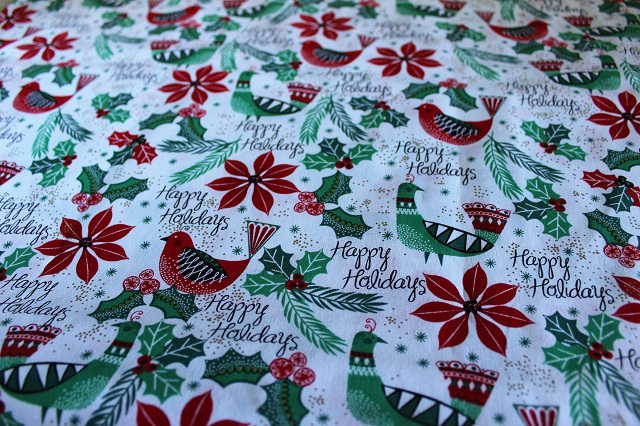My project is this set of Christmas pinwheel placemats.
After purchasing this charm pack of glittery holiday fabrics,
I paired it with this fun holiday fabric I found at JoAnn's.
Being careful to stitch the HST's so that the print all "read" in the same direction,
the pinwheels were finished up, and pressed with spinning seams.
Adding strips first to the right, then the top and bottom of the pinwheels increased the unit's size to 11" tall. With the addition of a background piece on the left, the placemats now finish approximately 14 1/2" x 11".
As for the quilting, I kept it simple. The background is quite busy, so no need to go overboard. Simple stippling does the trick, as does just one curving line to give motion to the pinwheel.
The backside is just as nice. There wasn't enough backing for all four, but with the addition of a red strip, that fun holiday print is all gone!
And check out that neatly machine stitched binding - love it!
Happy Quilting!













































